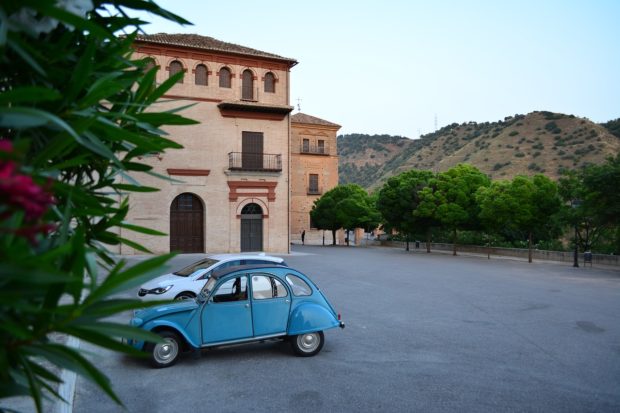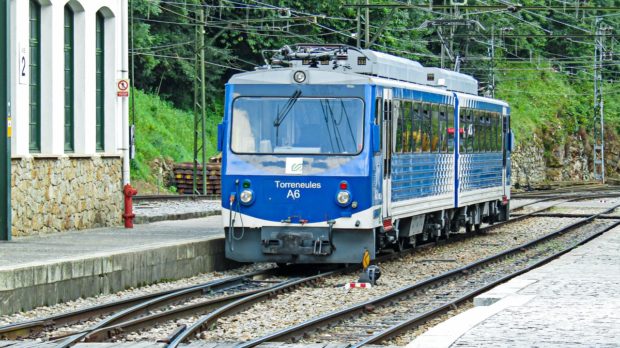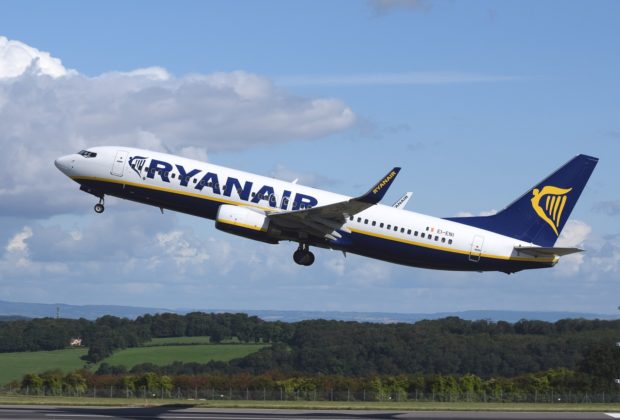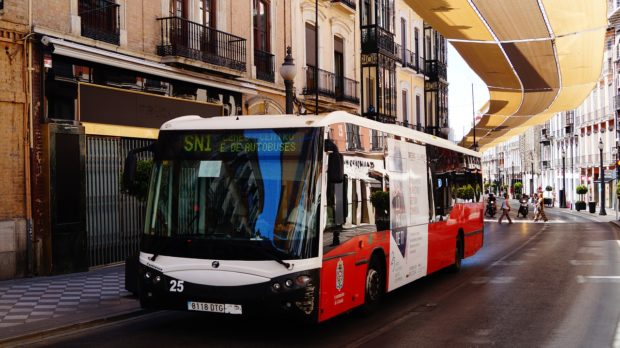Spain is a relatively large country (for Europe), comparable in size to the state of Texas. Regional identity is very strong, as it was once composed of multiple kingdoms which were united during the Reconquista by the same monarchs that commissioned Christopher Columbus to sail the seas. At this stage, Spanish became the official language of the country; however, you will still notice local dialects (and even one language completely unrelated to Spanish – Basque) being spoken as you traverse the different regions. This diversity means that within only a few hours or a few hundred miles you can find huge differences in provincial cuisine, customs, and architecture.
While you’re touring the countryside, use El Tenedor to discover restaurants and ATRÁPALO to find out about local actividades. If a Spanish website doesn’t offer an option to switch the language, you can always view it using the Google Chrome browser, which offers a translation feature.
Your ideal transportation method is, of course, going to depend on your must-see destinations, budget, and time restrictions. However, there are several tips and tricks that you should be aware of when planning a vacation in Spain so as to avoid being surprised by a delay or unexpected expenditure.
Renting a car
There’s nothing like putting on your favorite playlist, rolling down the windows, and watching a foreign landscape pass by. If you have the time and are comfortable driving, a Spanish road trip will allow you the freedom to keep plans flexible in the event you fall in love with a city and want to stay an extra day, or if you decide that you’d like to take a day trip to one of Spain’s many charming yet isolated towns. Driving through the Spanish countryside is a wonderful way to see small details you may miss on a high-speed train or plane.
It also allows you the option to make spontaneous stops or have interactions with locals that most tourists miss. If you’re traveling by car, you’ll want to be sure to brush up on your Spanish before you go, because you may need to ask for directions or interact with people working outside of the main tourist areas that may not speak English. Try an online/mobile app like Lingvist to get some basic vocabulary before you go. These interactions can sometimes be the most memorable part of your trip!
Pros:
- Freedom and flexibility
- Access to remote cities
- Avoid hauling luggage between destinations
- Privacy
Things to be aware of:
- It’s recommended to get an international driver’s license (If you’re in the United States, you can purchase one from AAA or AATA for $20)
- Most rental cars in Europe are manual transmissions, so there may be an extra cost for an automatic
- Gas is more expensive in Europe than in the United States – check the current costs and factor that into your budget
- There’s a 15% tax on car rentals that’s added onto the quoted amount at the rental kiosk
- Many rental agencies require that the driver be at least 25 years old
- If you’re planning on wine or sherry tasting, make sure you arrange a designated driver
- Get an idea of the speed limits in different areas, as speeding tickets can be quite expensive and must be paid on the spot by those not residing in Spain
- There are three different zones for parking (The colors are similar to USA indications):
- Blue Zone: Paid parking spaces with a time limit (usually two hours). It is free of charge during the night, and there is no time limit (between 8 pm and 8 am, although this depends on the town regulations)
- Green Zone: Paid parking spaces with a shorter time limit. The fee is usually more expensive than the blue ones
- Yellow Zone: Parking is prohibited entirely, or during certain hours (indicated in this case with signs)
- Autovias and autopistas are the two types of freeways/highways. Autovias will begin with the letter A (such as A3), while autopistas will begin with AP and may occasionally have tolls. Check for toll roads on your route at tools.eu/spain.
- Traffic can be very heavy all day in big cities, so plan to park and walk or take other public transportation (like the metropolitan underground in Madrid) within large cities
- Parking within a city (at a hotel or public parking lot) can be from €10–25 a night
Within big cities, park the car and try out the underground metropolitan lines, like the Sagrada Familia Metro (pictured below) in Barcelona.
By train
Train travel in Spain is fast, reasonably priced, and comfortable. Some say that the train network in Spain is the best in Europe. It offers several high-speed train routes (called AVE) between major cities, mostly starting in the capital city of Madrid. For example, the drive from Madrid to Barcelona takes six hours, while the AVE train ride is only two and a half hours. On long distance trips you can choose between first (preferente) or second (turista) class tickets.
Plan your train trips using SpainRail.com (also known as Renfe), which includes the high-speed AVE train. Train timetables are generally available around 60 days in advance and get more expensive as you get closer to the date of travel. Certain trains may also sell out, so purchase your tickets as soon as possible. You can also use an international train travel website like Omio.com or RailEurope.com, which accept all major credit cards and can display prices in any currency you prefer.
Pros:
- Comfortable (even bordering on spacious!) and allows for standing up/stretching, as well as using the bathroom on board
- Dependable
- Children under 4 are free, and between ages 4–12 tickets are 40% reduced
- Purchasing a round-trip ticket gives you a discount of 20% on the return
- Opt for an overnight train to/from further destinations such as Portugal or France to avoid the cost of a hotel; just pay for a litera, or small sleeping compartment
Things to be aware of:
- Prices can vary a lot based on time of the year, type of train, and how far in advance you book the ticket
- When purchasing a round-trip ticket, be aware of the type of train you are returning on – if it’s a cheaper train you may receive a refund, but if it’s a more expensive leg you may have to pay extra on the way back
By plane
Iberia.com is Spain’s main airline, with most long-haul international flights arriving in Madrid. Vueling.com is Iberia’s low-cost airline branch, which offers quick domestic flights, as well as some international flights within Europe.
The standard low-cost airlines RyanAir and EasyJet also operate in Spain, and sometimes offer internal flights between cities that are cheaper than a train ticket. Be aware that these airlines are very strict about cabin/carry-on luggage size and weight requirements, so you may want to purchase a checked bag if you’re not sure if your bag will be acceptable, as the cost to check a bag once you’re at the airport can be quite high.
Pros:
- Fast
- Comfortable
- (Sometimes) affordable
Things to be aware of:
- Airports are often outside of the city center, so make sure you look into buses, shuttles, or metropolitan/subway services into the city
By bus
Buses are probably the cheapest option for traveling around Spain, but they are often less comfortable than the previously mentioned methods. In some cases, a bus geared toward tourists (such as Flixbus) may be more convenient than a train because it is direct (doesn’t require any transfers) and may even have Wi-Fi. However, buses are subject to traffic conditions, so they are more likely to be delayed than a train. Check Movelia.es for consolidated regional bus tickets, which you can purchase in advance and print at home.
Pros:
- Inexpensive
- Service to more remote locations
Things to be aware of:
- Journeys are much longer compared to trains (especially high-speed trains)
- Check timetables for regional buses, as there are fewer buses running on weekends and some lines may not be in service on Sundays
- Ensure there aren’t any holidays affecting the service
- Check whether the ticket you’ve bought is for a specific time, as it may not be valid on a later bus
- In some cases you can purchase a bus ticket once you’ve boarded, but you should check the website or ask a local to see if you need to purchase a ticket beforehand from a bar (coffee bar/tobacco shop) near the bus station (estación de autobuses)
Regional Bus Companies
ALSA.es: Routes all over the country.
From Madrid: Barcelona, Zaragoza, Tarragona, Ávila, Segovia, Valladolid, León, major towns in Galicia, Alicante, Murcia, and Almería
From Seville: through Extremadura and Salamanca into Galicia, through Córdoba throughout the east of the country to Barcelona
Auto-Res.net: From Madrid to Extremadura, western Castilla and León (Tordesillas, Salamanca, and Zamora), Valencia via eastern Castilla-La Mancha (Cuenca)
Continental-Auto.es: From Madrid to Burgos, Logroño, Navarra, the Basque Country, Santander, Soria, Alcalá de Henares, Guadalajara, Granada (+ most of Andalusia), and Toledo
Alsina Graells: Part of the Continental-Auto group. From Barcelona across Catalonia to destinations west and northwest, such as Vielha, La Seu d’Urgell, and Lleida
LaSepulvedana.es: From Madrid to Segovia, parts of Castilla-La Mancha, Extremadura, and some of Andalusia
Socibus.es: Between Madrid and western Andalusia (Cádiz, Córdoba, Huelva, and Seville)
Of course, if you come across a burro taxi (donkey taxi), it may not be the fastest mode of transportation, but it’d be absurdo not to try it out! ¡Buen viaje!
The post Planes, Trains, or Automobiles? A Practical Guide to Traveling Around Spain appeared first on YourAmazingPlaces.com.






No comments:
Post a Comment